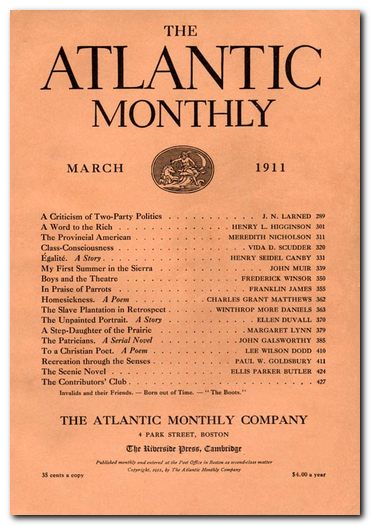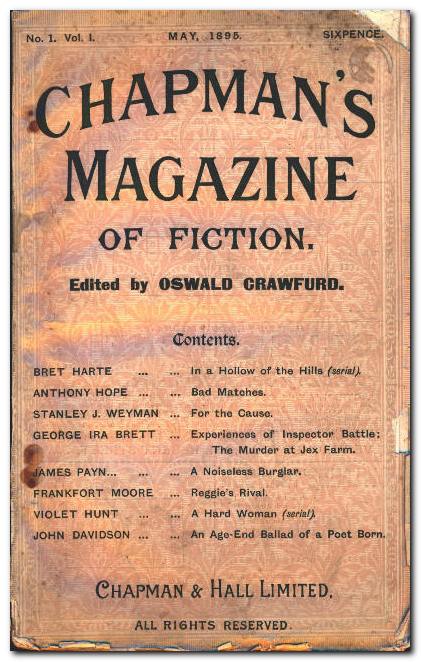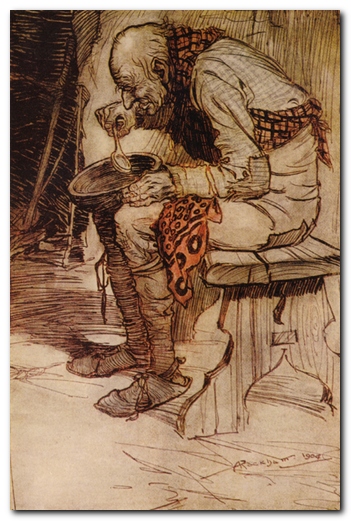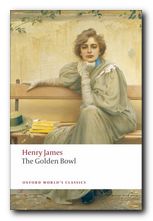tutorials, critical commentaries, and study guides
This is a series of tutorials and guidance notes on the complete tales of Henry James. He gave the stories the name ‘tales’ because hardly any of them are now what would be considered traditional short stories. Indeed, several of them are now regularly regarded as novellas. There are over one hundred tales in the complete collection. The series is shown here in alphabetical order.
![]() A Bundle of Letters — (1879)
A Bundle of Letters — (1879)
![]() A Day of Days — (1866)
A Day of Days — (1866)
![]() A Landscape Painter — (1866)
A Landscape Painter — (1866)
![]() A Light Man — (1869)
A Light Man — (1869)
![]() A London Life — (1888)
A London Life — (1888)
![]() A Most Extraordinary Case — (1868)
A Most Extraordinary Case — (1868)
![]() A New England Winter — (1884)
A New England Winter — (1884)
![]() A Passionate Pilgrim — (1871)
A Passionate Pilgrim — (1871)
![]() A Problem — (1868)
A Problem — (1868)
![]() A Round of Visits — (1910)
A Round of Visits — (1910)
![]() A Tragedy of Error — (1864)
A Tragedy of Error — (1864)
![]() Adina — (1874)
Adina — (1874)
![]() An International Episode — (1874)
An International Episode — (1874)
![]() At Isella — (1871)
At Isella — (1871)
![]() Benvolio — (1875)
Benvolio — (1875)
![]() Broken Wings — (1900)
Broken Wings — (1900)
![]() Brooksmith — (1891)
Brooksmith — (1891)
![]() Collaboration — (1892)
Collaboration — (1892)
![]() Covering End — (1895)
Covering End — (1895)
![]() Crapy Cornelia — (1909)
Crapy Cornelia — (1909)
![]() Crawford’s Consistency — (1876)
Crawford’s Consistency — (1876)
![]() Daisy Miller — (1878)
Daisy Miller — (1878)
![]() De Grey: A Romance — (1868)
De Grey: A Romance — (1868)
![]() Eugene Pickering — (1874)
Eugene Pickering — (1874)
![]() Europe — (1899)
Europe — (1899)
![]() Flickerbridge — (1902)
Flickerbridge — (1902)
![]() Fordham Castle — (1904)
Fordham Castle — (1904)
![]() Four Meetings — (1877)
Four Meetings — (1877)
![]() Gabrielle de Bergerac — (1869)
Gabrielle de Bergerac — (1869)
![]() Georgina’s Reasons — (1884)
Georgina’s Reasons — (1884)
![]() Glasses — (1896)
Glasses — (1896)
![]() Greville Fane — (1892)
Greville Fane — (1892)
![]() Guest’s Confession — (1872)
Guest’s Confession — (1872)
![]() In the Cage — (1898)
In the Cage — (1898)
![]() Jersey Villas — (1892)
Jersey Villas — (1892)
![]() John Delavoy — (1898)
John Delavoy — (1898)
![]() Julia Bride — (1908)
Julia Bride — (1908)
![]() Lady Barbarina — (1884)
Lady Barbarina — (1884)
![]() Longstaff’s Marriage — (1878)
Longstaff’s Marriage — (1878)
![]() Lord Beaupre — (1892)
Lord Beaupre — (1892)
![]() Louisa Pallant — (1888)
Louisa Pallant — (1888)
![]() Madame de Mauves — (1874)
Madame de Mauves — (1874)
![]() Master Eustace — (1871)
Master Eustace — (1871)
![]() Maud-Evelyn — (1900)
Maud-Evelyn — (1900)
![]() Miss Gunton of Poughkeepsie — (1900)
Miss Gunton of Poughkeepsie — (1900)
![]() Mora Montravers — (1909)
Mora Montravers — (1909)
![]() Mrs Medwin — (1901)
Mrs Medwin — (1901)
![]() Mrs Temperly — (1887)
Mrs Temperly — (1887)
![]() My Friend Bingham — (1867)
My Friend Bingham — (1867)
![]() Nona Vincent — (1892)
Nona Vincent — (1892)
![]() Osborne’s Revenge — (1868)
Osborne’s Revenge — (1868)
![]() Owen Wingrave — (1892)
Owen Wingrave — (1892)
![]() Pandora — (1884)
Pandora — (1884)
![]() Paste — (1899)
Paste — (1899)
![]() Poor Richard — (1867)
Poor Richard — (1867)
![]() Professor Fargo — (1874)
Professor Fargo — (1874)
![]() Sir Edmund Orme — (1891)
Sir Edmund Orme — (1891)
![]() The Abasement of the Northmores — (1900)
The Abasement of the Northmores — (1900)
![]() The Altar of the Dead — (1895)
The Altar of the Dead — (1895)
![]() The Aspern Papers — (1888)
The Aspern Papers — (1888)
![]() The Author of Beltraffio — (1884)
The Author of Beltraffio — (1884)
![]() The Beast in the Jungle — (1903)
The Beast in the Jungle — (1903)
![]() The Beldonald Holbein — (1901)
The Beldonald Holbein — (1901)
![]() The Bench of Desolation — (1909)
The Bench of Desolation — (1909)
![]() The Birthplace — (1903)
The Birthplace — (1903)
![]() The Chaperon — (1891)
The Chaperon — (1891)
![]() The Coxon Fund — (1894)
The Coxon Fund — (1894)
![]() The Death of the Lion — (1894)
The Death of the Lion — (1894)
![]() The Diary of a Man of Fifty — (1879)
The Diary of a Man of Fifty — (1879)
![]() The Figure in the Carpet — (1896)
The Figure in the Carpet — (1896)
![]() The Friends of the Friends — (1896)
The Friends of the Friends — (1896)
![]() The Ghostly Rental — (1876)
The Ghostly Rental — (1876)
![]() The Given Case — (1899)
The Given Case — (1899)
![]() The Great Condition — (1899)
The Great Condition — (1899)
![]() The Great Good Place — (1900)
The Great Good Place — (1900)
![]() The Impressions of a Cousin — (1883)
The Impressions of a Cousin — (1883)
![]() The Jolly Corner — (1908)
The Jolly Corner — (1908)
![]() The Last of the Valerii — (1874)
The Last of the Valerii — (1874)
![]() The Lesson of the Master — (1888)
The Lesson of the Master — (1888)
![]() The Liar — (1888)
The Liar — (1888)
![]() The Madonna of the Future — (1873)
The Madonna of the Future — (1873)
![]() The Marriages — (1891)
The Marriages — (1891)
![]() The Middle Years — (1893)
The Middle Years — (1893)
![]() The Next Time — (1895)
The Next Time — (1895)
![]() The Papers — (1903)
The Papers — (1903)
![]() The Patagonia — (1888)
The Patagonia — (1888)
![]() The Path of Duty — (1884)
The Path of Duty — (1884)
![]() The Pension Beaurepas — (1879)
The Pension Beaurepas — (1879)
![]() The Point of View — (1882)
The Point of View — (1882)
![]() The Private Life — (1892)
The Private Life — (1892)
![]() The Pupil — (1891)
The Pupil — (1891)
![]() The Real Right Thing — (1899)
The Real Right Thing — (1899)
![]() The Real Thing — (1892)
The Real Thing — (1892)
![]() The Romance of Certain Old Clothes — (1868)
The Romance of Certain Old Clothes — (1868)
![]() The Siege of London — (1883)
The Siege of London — (1883)
![]() The Solution — (1889)
The Solution — (1889)
![]() The Special Type — (1900)
The Special Type — (1900)
![]() The Story in It — (1902)
The Story in It — (1902)
![]() The Story of a Masterpiece — (1868)
The Story of a Masterpiece — (1868)
![]() The Story of a Year — (1865)
The Story of a Year — (1865)
![]() The Sweetheart of M. Briseux — (1873)
The Sweetheart of M. Briseux — (1873)
![]() The Third Person — (1900)
The Third Person — (1900)
![]() The Tone of Time — (1900)
The Tone of Time — (1900)
![]() The Tree of Knowledge — (1900)
The Tree of Knowledge — (1900)
![]() The Turn of the Screw — (1898)
The Turn of the Screw — (1898)
![]() The Two Faces — (1900)
The Two Faces — (1900)
![]() The Velvet Glove — (1909)
The Velvet Glove — (1909)
![]() The Visits — (1892)
The Visits — (1892)
![]() The Wheel of Time — (1892)
The Wheel of Time — (1892)
![]() Theodolinde — (1878)
Theodolinde — (1878)
![]() Travelling Companions — (1870)
Travelling Companions — (1870)
![]() Two Countries — (1888)
Two Countries — (1888)
Other works by Henry James
 Washington Square (1880) is a superb early short novel, It’s the tale of a young girl whose future happiness is being controlled by her strict authoritarian (but rather witty) father. She is rather reserved, but has a handsome young suitor. However, her father disapproves of him, seeing him as an opportunist and a fortune hunter. There is a battle of wills – all conducted within the confines of their elegant New York town house. Who wins out in the end? You will probably be surprised by the outcome. This is a masterpiece of social commentary, offering a sensitive picture of a young woman’s life.
Washington Square (1880) is a superb early short novel, It’s the tale of a young girl whose future happiness is being controlled by her strict authoritarian (but rather witty) father. She is rather reserved, but has a handsome young suitor. However, her father disapproves of him, seeing him as an opportunist and a fortune hunter. There is a battle of wills – all conducted within the confines of their elegant New York town house. Who wins out in the end? You will probably be surprised by the outcome. This is a masterpiece of social commentary, offering a sensitive picture of a young woman’s life.
![]() Buy the book from Amazon UK
Buy the book from Amazon UK
![]() Buy the book from Amazon US
Buy the book from Amazon US
 The Aspern Papers (1888) is a psychological drama set in Venice which centres on the tussle for control of a great writer’s correspondence. An elderly lady, ex-lover of the writer, seeks a husband for her daughter. But the potential purchaser of the papers is a dedicated bachelor. Money is also at stake – but of course not discussed overtly. There is a refined battle of wills between them. Who will win in the end? As usual, James keeps the reader guessing. The novella is a masterpiece of subtle narration, with an ironic twist in its outcome. This collection of stories also includes three of his accomplished long short stories – The Private Life, The Middle Years, and The Death of the Lion.
The Aspern Papers (1888) is a psychological drama set in Venice which centres on the tussle for control of a great writer’s correspondence. An elderly lady, ex-lover of the writer, seeks a husband for her daughter. But the potential purchaser of the papers is a dedicated bachelor. Money is also at stake – but of course not discussed overtly. There is a refined battle of wills between them. Who will win in the end? As usual, James keeps the reader guessing. The novella is a masterpiece of subtle narration, with an ironic twist in its outcome. This collection of stories also includes three of his accomplished long short stories – The Private Life, The Middle Years, and The Death of the Lion.
![]() Buy the book from Amazon UK
Buy the book from Amazon UK
![]() Buy the book from Amazon US
Buy the book from Amazon US
 The Spoils of Poynton (1896) is a short novel which centres on the contents of a country house, and the question of who is the most desirable person to inherit it via marriage. The owner Mrs Gereth is being forced to leave her home to make way for her son and his greedy and uncultured fiancee. Mrs Gereth develops a subtle plan to take as many of the house’s priceless furnishings with her as possible. But things do not go quite according to plan. There are some very witty social ironies, and a contest of wills which matches nouveau-riche greed against high principles. There’s also a spectacular finale in which nobody wins out.
The Spoils of Poynton (1896) is a short novel which centres on the contents of a country house, and the question of who is the most desirable person to inherit it via marriage. The owner Mrs Gereth is being forced to leave her home to make way for her son and his greedy and uncultured fiancee. Mrs Gereth develops a subtle plan to take as many of the house’s priceless furnishings with her as possible. But things do not go quite according to plan. There are some very witty social ironies, and a contest of wills which matches nouveau-riche greed against high principles. There’s also a spectacular finale in which nobody wins out.
![]() Buy the book from Amazon UK
Buy the book from Amazon UK
![]() Buy the book from Amazon US
Buy the book from Amazon US
© Roy Johnson 2013
More on Henry James
More on literature
More on the novella
More on literary studies
More on short stories
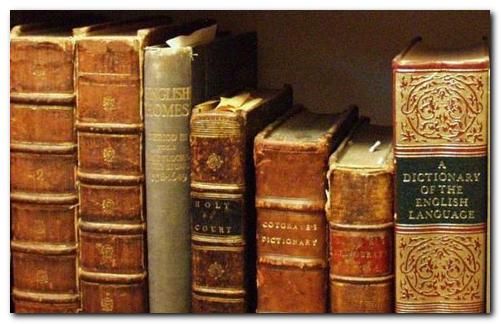


 What Masie Knew
What Masie Knew The Ambassadors
The Ambassadors Daisy Miller
Daisy Miller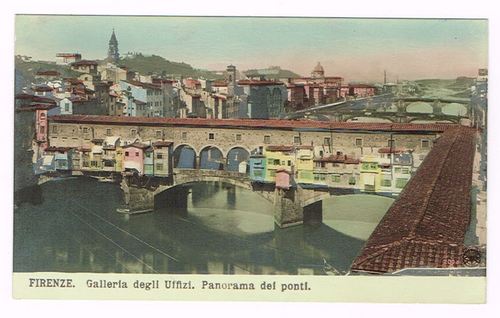

 The Bostonians (1886) is a novel about the early feminist movement. The heroine Verena Tarrant is an ‘inspirational speaker’ who is taken under the wing of Olive Chancellor, a man-hating suffragette and radical feminist. Trying to pull her in the opposite direction is Basil Ransom, a vigorous young man to whom Verena becomes more and more attracted. The dramatic contest to possess her is played out with some witty and often rather sardonic touches, and as usual James keeps the reader guessing about the outcome until the very last page.
The Bostonians (1886) is a novel about the early feminist movement. The heroine Verena Tarrant is an ‘inspirational speaker’ who is taken under the wing of Olive Chancellor, a man-hating suffragette and radical feminist. Trying to pull her in the opposite direction is Basil Ransom, a vigorous young man to whom Verena becomes more and more attracted. The dramatic contest to possess her is played out with some witty and often rather sardonic touches, and as usual James keeps the reader guessing about the outcome until the very last page.